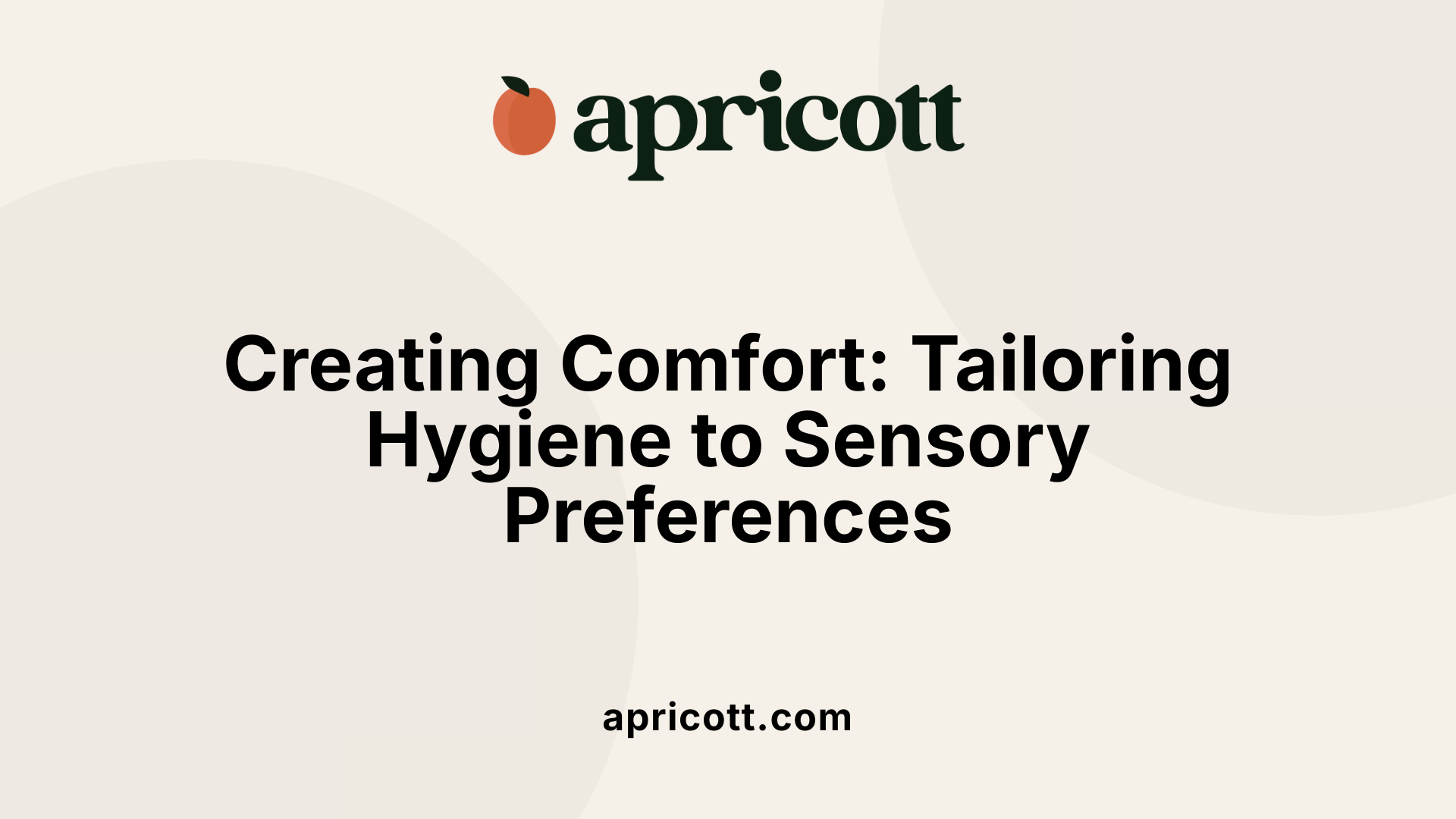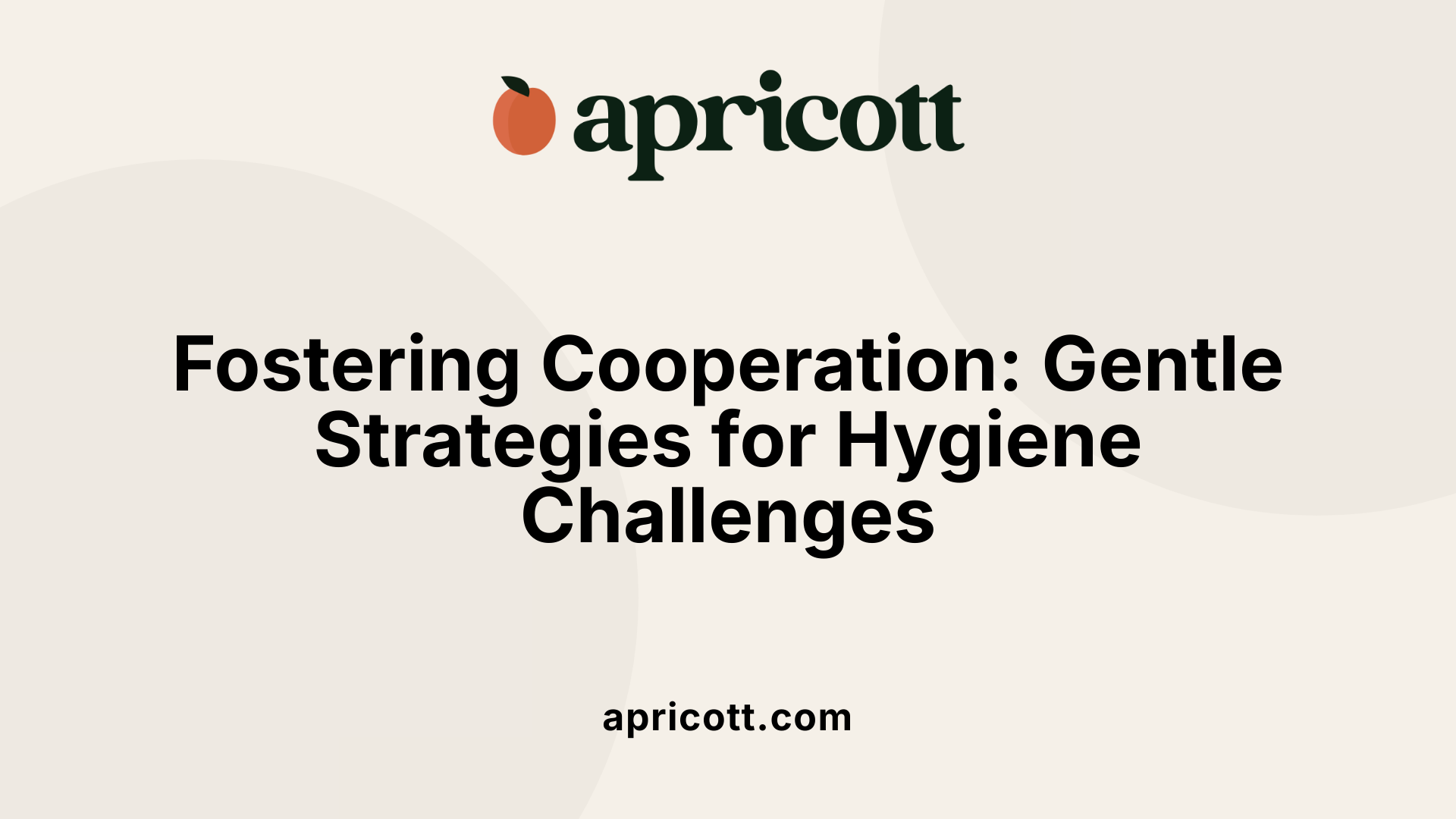Understanding the Importance of Personal Hygiene for Children with Autism
Teaching children with autism how to perform personal hygiene routines such as handwashing and showering is a vital component of fostering independence, promoting health, and building confidence. Tailored approaches that address sensory sensitivities, incorporate visual supports, and promote positive experiences can significantly improve hygiene routines for children with autism and their caregivers.
Establishing Consistent and Predictable Routines
 For children with autism, establishing dependable routines for personal hygiene plays a crucial role in reducing anxiety and providing a sense of security. When routines are predictable, children know what to expect, which can lessen feelings of uncertainty and enable smoother participation in daily activities.
For children with autism, establishing dependable routines for personal hygiene plays a crucial role in reducing anxiety and providing a sense of security. When routines are predictable, children know what to expect, which can lessen feelings of uncertainty and enable smoother participation in daily activities.
Using visual tools such as schedules, checklists, and social stories can greatly assist in guiding hygiene tasks. These visual supports break down complex processes like brushing teeth or bathing into clear, step-by-step instructions, making it easier for children to follow along. For example, a visual schedule might display images or words representing each step, helping children understand what comes next.
To promote independence, it's essential to gradually reduce prompts and assistance over time. Initially, caregivers might physically guide or verbally prompt the child through each step. As confidence and skill improve, these supports can be gently phased out, encouraging the child to take more ownership of their hygiene routine.
Most effective hygiene teaching strategies include combining these methods—consistent routines, visual supports, and step-by-step guidance—while providing positive reinforcement like praise or small rewards. This approach creates positive associations with hygiene tasks, further motivating children to participate willingly.
Adapting these strategies to each child's sensory preferences also enhances comfort and engagement. Adjustments such as choosing unscented products or ensuring water temperature is comfortable can make hygiene activities more pleasant, reducing resistance and encouraging ongoing participation.
In summary, employing structured, visual, and gradually diminishing prompts within a consistent routine framework fosters independence and confidence in children with autism when managing personal hygiene tasks.
Utilizing Visual Supports and Demonstrations
 Teaching children with autism personal hygiene skills effectively involves multiple approaches that cater to their unique learning styles. Visual supports play a crucial role in this process. Using schedules, charts, and step-by-step instructions can make hygiene routines more understandable and less anxiety-provoking. These tools provide children with clear, predictable guidance and help them remember each step involved in tasks like brushing teeth or washing hands.
Teaching children with autism personal hygiene skills effectively involves multiple approaches that cater to their unique learning styles. Visual supports play a crucial role in this process. Using schedules, charts, and step-by-step instructions can make hygiene routines more understandable and less anxiety-provoking. These tools provide children with clear, predictable guidance and help them remember each step involved in tasks like brushing teeth or washing hands.
In addition to visual aids, modeling behaviors is highly beneficial. Demonstrations through live modeling or video clips give children a visual example of how to perform hygiene activities. Seeing a trusted adult or a peer demonstrate the steps encourages imitation and helps children understand what to do.
Breaking complex hygiene tasks into small, manageable steps makes learning easier and boosts confidence. For example, instead of tackling all grooming tasks at once, focus on drying hands, then brushing teeth, and gradually add more steps as the child progresses.
Incorporating these strategies creates a supportive environment where children with autism can develop independence in hygiene routines while feeling confident and comfortable.
Supporting Sensory Needs During Hygiene Activities
 Children with autism often have diverse sensory sensitivities that affect their experience with hygiene routines. To make these activities more comfortable, caregivers should consider adjustments based on the child's unique sensory profile. For example, controlling water temperature can prevent discomfort, as some children might be sensitive to hot or cold water. Using unscented or hypoallergenic products can help reduce overwhelming scents, and choosing soft or textured towels and washcloths can improve comfort.
Children with autism often have diverse sensory sensitivities that affect their experience with hygiene routines. To make these activities more comfortable, caregivers should consider adjustments based on the child's unique sensory profile. For example, controlling water temperature can prevent discomfort, as some children might be sensitive to hot or cold water. Using unscented or hypoallergenic products can help reduce overwhelming scents, and choosing soft or textured towels and washcloths can improve comfort.
In addition, selecting sensory-friendly products and tools can greatly enhance the hygiene experience. Items such as silicone brushes, mild soaps, or water toys can make handwashing and bathing more engaging and less intimidating.
Making hygiene activities both engaging and calming encourages children to participate willingly. Incorporating music, visual timers, or incorporating a preferred item can transform routine tasks into positive, sensory-affirming experiences. Tailoring hygiene routines to align with sensory needs helps children with autism feel more in control, boosting their confidence and independence in managing personal care.
Addressing Challenges in Bathing and Showering
 Bathing and showering can present unique challenges for children with autism, especially when sensory sensitivities, resistance, or distress are involved. Many children may resist water, find specific textures uncomfortable, or become overwhelmed by the sights and sounds of the bathroom.
Bathing and showering can present unique challenges for children with autism, especially when sensory sensitivities, resistance, or distress are involved. Many children may resist water, find specific textures uncomfortable, or become overwhelmed by the sights and sounds of the bathroom.
To support children facing these difficulties, creating a calming environment is essential. Adjust lighting to soft, gentle levels to avoid overstimulation. Reduce noise by turning off loud appliances and using quiet, soothing background sounds if needed. Limiting strong scents and using unscented or sensory-friendly bath products can prevent sensory overload.
Incorporating preferred activities helps make bath time more acceptable. For example, allowing the child to bring a favorite toy or listen to calming music during the routine can provide comfort and distraction.
Patience and gradual desensitization are crucial. Introducing the bathroom environment slowly, starting with short visits or playtime near the bathing area, can help children acclimate. Over time, gradually increase exposure and complexity of tasks. Professional guidance from occupational therapists or behavioral specialists can offer tailored strategies and support.
Using visual supports like picture schedules or social stories helps children understand what to expect, reducing anxiety and promoting cooperation.
In summary, supporting children with autism through tailored, respectful approaches, patience, and environmental adjustments can foster a positive bathing experience and develop independence in personal hygiene.
Overcoming Challenges: Building Comfort and Cooperation
 Helping children with autism develop consistent hygiene routines can present various challenges, especially during activities like bathing or showering. Many children with autism experience sensory sensitivities that make water, sounds, or textures overwhelming, leading to resistance or distress.
Helping children with autism develop consistent hygiene routines can present various challenges, especially during activities like bathing or showering. Many children with autism experience sensory sensitivities that make water, sounds, or textures overwhelming, leading to resistance or distress.
To support children through these challenges, caregivers can create a calming environment. This includes adjusting lighting to be soft, reducing noise levels, and using soothing scents or aromatherapy to promote relaxation. Choosing gentle, fragrance-free products designed for sensitive skin can also make a difference.
Establishing a predictable routine is crucial. Using visual supports such as schedules or step-by-step charts helps children understand what to expect and provides a sense of control. Offering choices—like selecting a favorite towel or toy—can empower children and reduce anxiety.
Incorporating preferred sensory activities, such as waterproof toys or cause-and-effect tools, can make bath time more fun and less intimidating. Patience is vital; caregivers should approach the routine gradually, using desensitization techniques if needed. Monitoring the child’s responses and adjusting the environment accordingly can foster greater comfort and cooperation.
When necessary, seeking support from professionals like occupational therapists can help develop tailored strategies that address sensory sensitivities effectively. Ultimately, a combination of patience, preparation, and professional guidance can help children with autism build positive and confident hygiene habits.
Empowering Children and Supporting Caregivers in Hygiene Routines
By implementing tailored strategies that include visual supports, sensory accommodations, and positive reinforcement, caregivers can effectively support children with autism in developing essential handwashing and showering skills. Consistent routines, patience, and professional collaboration are key elements in overcoming challenges, promoting independence, and making hygiene routines a positive experience for children and their families.
References
- Teaching Hygiene Skills to Children with Autism: A Guide ...
- A Guide to Teaching Kids With Autism Hygiene Skills
- Personal hygiene for autistic pre-teens and teenagers
- Teaching Hygiene Skills to Children with Autism: A Guide ...
- 10 Personal Hygiene Skills for Kids with Autism
- Helping a Child with ASD Develop Good Hygiene Habits
- A Guide to Teaching Kids With Autism Hygiene Skills
- Helping a Child with ASD Develop Good Hygiene Habits
- Personal hygiene for autistic pre-teens and teenagers
.svg)
.svg)








